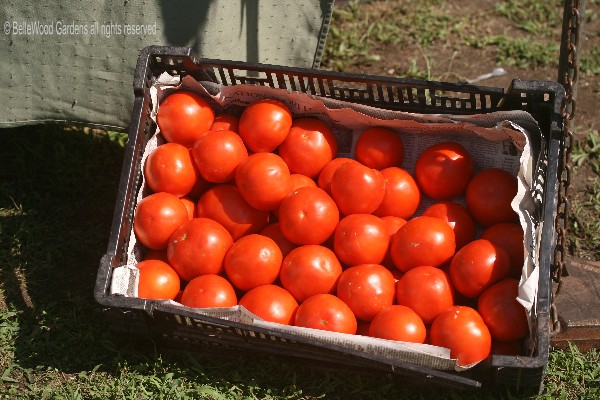
Tuesday, 18 January 2011
Let's Hear It for the Garden State

States have two names. There's the "official" name and a nickname name. Connecticut, for example, is the Nutmeg State. And New Jersey? New Jersey is the Garden State.
There are a couple of reasons for this moniker. The appellation was first applied by Abraham Browning in a speech given on August 24, 1876. Apparently he compared New Jersey to an immense barrel, filled with good things to eat. Open at both ends, he claimed that Pennsylvanians were grabbing from one end and New Yorkers from the other. He called New Jersey the Garden State, and the name stuck.
But perhaps a better reason is the diversity of fruits and vegetables produced within the boundaries of this densely populated state, and the exceptional varieties developed at Rutgers the State University of New Jersey. Probably the most intense promotion of this nickname for New Jersey began when the legislature voted to add the legend "Garden State" to New Jersey license plates in 1954.
In 1983 an advertising and promotional program was developed. The focus of Jersey Fresh is to help farmers inform consumers about the availability and variety of fruits and vegetables grown in New Jersey. It has become the benchmark for other states to initiate their own state-grown agricultural marketing programs. New Jersey grows more than 100 different varieties of fruits, vegetables and herbs. The state is ranked nationally in the top ten as producer of such items as blueberries, peaches, bell peppers, squash, tomatoes, and cranberries.
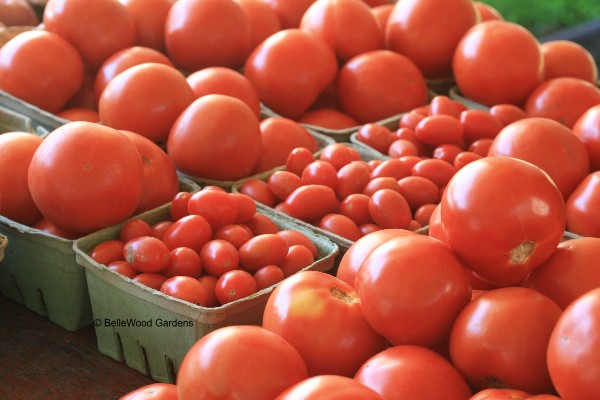
Cranberries were first domesticated and commercially grown in New Jersey, and the state is one of only five states that have the right climate, acidic sandy soil, and the wetlands needed to cultivate cranberries on a commercial scale. Even more interesting, it was Miss Elizabeth White of Whitesbog cranberry farm in the Jersey Pine Barrens and Dr. Frederick Coville of the U.S. Department of Agriculture who early in the 20th century selected and developed blueberry cultivars, and discovered the techniques for their successful cultivation. In 1916 she marketed the nation's first commercial crop of blueberries under the name of Tru-Blu-Berries.
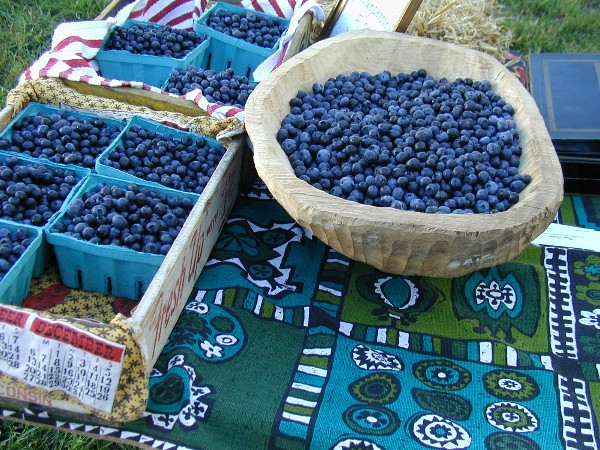
Interested in all plants native to the New Jersey Pine Barrens, Elizabeth White formed the Holly Haven, Inc. and was active in cultivating the native American holly, Ilex opaca, rescuing it from obscurity. In 1947, she helped found the Holly Society of America.

American hollies continued in popularity. Beginning with an evaluation of different varieties in the 1950s, Dr. Elwin Orton of Rutgers University spent over 40 years breeding plants for improved qualities, first with hollies, then with dogwoods. The original plantings, together with a number of Dr. Orton's selections such as 'Dan Fenton', 'Jersey Princess', 'Jersey Delight' and 'Jersey Knight', compose one of the largest collections of American hollies in the United States. They may be seen at Rutgers gardens in New Brunswick, New Jersey.
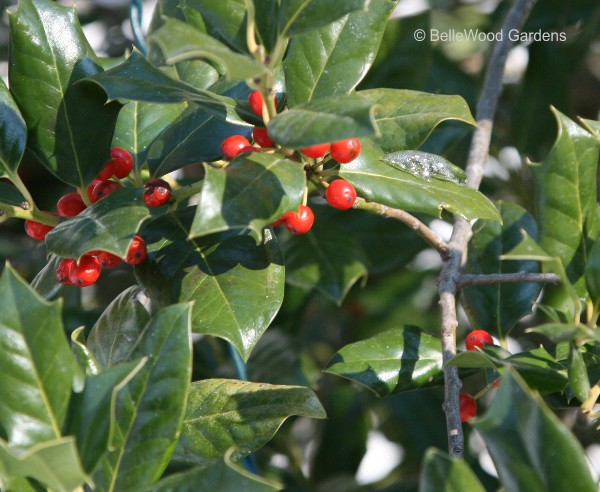
But the epithet of Garden State came from all the good things to eat that were - and are - grown here. Tomatoes, for example. An aside: once upon a time while driving from Sacramento to Davis, California we chanced to be following a gondola truck heaped with tomatoes. Passing over a bump in the road a tomato perched at the top of the load quivered, then fell to the asphalt. Did it split, did it splatter? No. It just lay there, like the ubiquitous, tough-skinned and flavorless, tomato-shaped vegetable product that's shipped to market and foisted on the ignorant public. So unlike a proper Jersey tomato, unofficially the state vegetable.
When it was introduced to commercial growers and home gardeners in 1968, the Rutgers-bred Ramapo tomato quickly became a favorite. And no wonder, even among a field of great varieties, this hybrid was easy to grow, robust, and prolific. Plump, round, red - and most of all - flavorful, for many gardeners the Ramapo became summer in a bite, the Jersey tomato. In the late '70s through the '80s, the softer, thinner-skinned Ramapo faded in popularity as commercial growers shifted their favor to firmer hybrids that could better weather the trip from farm to market. Alas, as hardiness was bred in, the flavor declined.
Since the Ramapo is a hybrid tomato it cannot come true from seed. In pursuit of that remembered flavor, desperate home and commercial growers would beat a path to Rutgers, the one place that still had the seeds. For years, the university doled out small batches of seeds, but fell far short of a demand that grew as more people looked for the tomato of their memories. Finally, in 2008 Rutgers reintroduced the Ramapo, having found a company in Israel that could produce the seed on a large scale.
There's also the justly famous Rutgers tomato. Introduced in 1934 during expansion of canning and truck farming when over 36,000 acres of tomatoes were grown in the Garden State, by Lyman Schermerhorn, Rutgers proved to be an ideal, locally well-adapted and improved all purpose tomato for processing as well as fresh market sales. As a top performing tomato for New Jersey's processors from Campbell Soup, Heinz, and Hunt Rutgers continued to be a preferred choice of commercial growers through much of the mid-twentieth century, grown worldwide, and used in breeding and selection of other improved varieties. It should be noted that when Rutgers was released by the New Jersey Agricultural Experiment Station, Professor Schermerhorn invited and encouraged seedsmen to continue selecting for true types in their seed fields. Thus, the original Rutgers tomato line is long lost and all the seeds sold today are derivative selections, possibly even different cultivars, from the original.
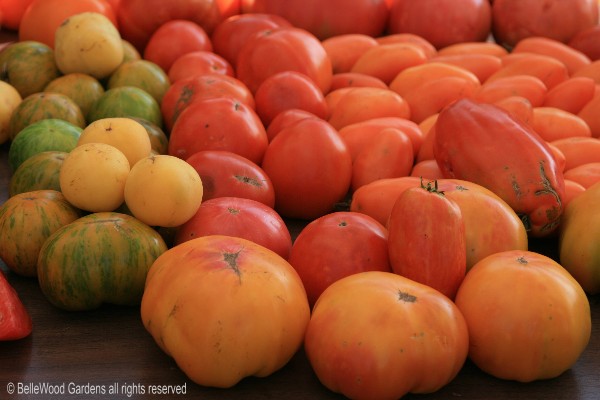
Note: weather permitting and growing conditions being suitable, you can sample the Ramapo, the Rutgers, and numerous other heirloom tomato varieties at the Snyder Farm research station Great Tomato Tasting in Pittstown, New Jersey, usually held in early September.
And then there's asparagus. New hybrids that are well adapted to growing conditions in the Northeast have been developed by Dr. Howard Ellison of Rutgers University. Superior to the Washington strains, the new hybrids, whether dioecious or all male, are reported to have greater disease resistance and to produce higher yields than the older Washington varieties. Dioecious hybrids consist of male and female plants, but male hybrids consist of the more desirable all or nearly all male plants. Some of the asparagus varieties that were developed at Rutgers include all-male hybrids Jersey Giant and Greenwich, both of which are rust resistant and Fusarium tolerant, and Jersey Centennial, a dioecious hybrid which is also rust resistant, Fusarium tolerant. Martha Washington, Brooks strain was selected from surviving plants in an old commercial field in New Jersey. Though dioecious, and not a hybrid, it has shown excellent vigor.
So let's hear it for the Garden State, source for the incomparable Jersey tomato sandwich (thick slices from a just-plucked-from-the-garden tomato, still warm from the sun. Two slices of white bread, a smear of mayonnaise, sprinkle of salt) summer in every bite!
